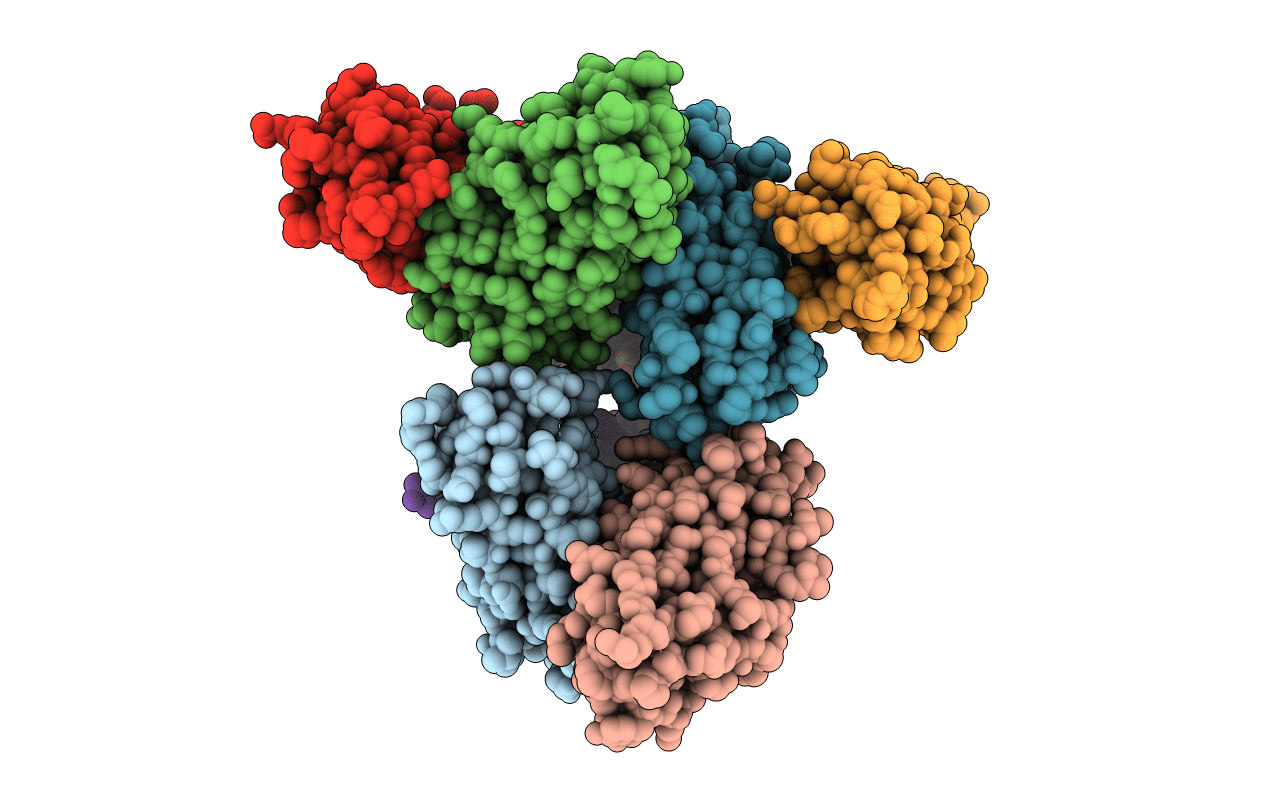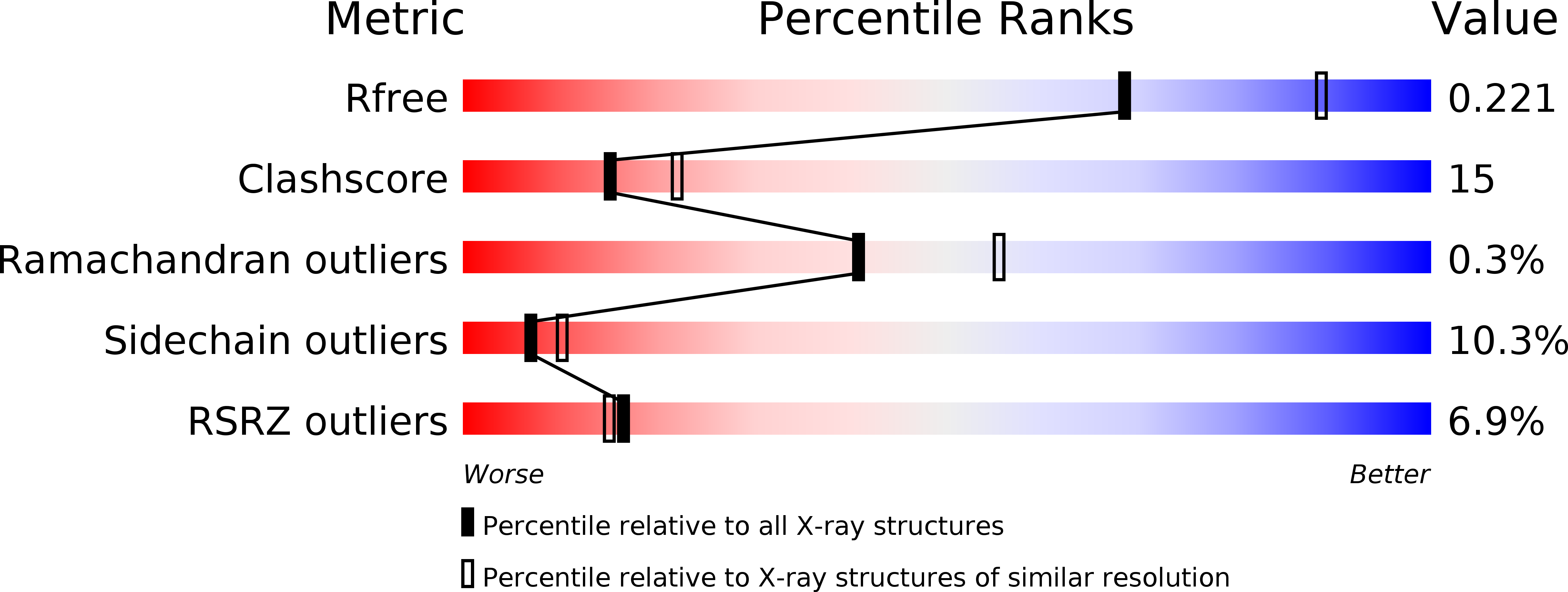
Deposition Date
2014-05-07
Release Date
2014-10-01
Last Version Date
2024-11-13
Entry Detail
PDB ID:
4PHX
Keywords:
Title:
Crystal structure of AggB, the minor subunit of aggregative adherence fimbriae type I from the Escherichia coli O4H104
Biological Source:
Source Organism:
Escherichia coli (Taxon ID: 562)
Host Organism:
Method Details:
Experimental Method:
Resolution:
2.40 Å
R-Value Free:
0.27
R-Value Work:
0.22
R-Value Observed:
0.23
Space Group:
P 21 21 2


